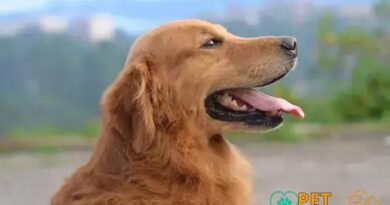What is Kneecap
What is Kneecap?
The kneecap, also known as the patella, is a small, flat, triangular bone located at the front of the knee joint. In dogs, the kneecap plays a crucial role in the overall function of the knee, providing stability and facilitating movement. Understanding the anatomy and function of the kneecap is essential for dog owners, especially when it comes to recognizing potential health issues related to this important bone.
Anatomy of the Kneecap
The kneecap is situated within the quadriceps tendon, which connects the thigh muscles to the shinbone (tibia). It acts as a shield for the knee joint, protecting it from injuries and providing leverage for the muscles that straighten the leg. The patella is connected to the femur and tibia by ligaments, which help maintain its position and function during movement. This intricate anatomy is vital for the proper functioning of a dog’s hind leg.
Common Kneecap Issues in Dogs
One of the most common issues related to the kneecap in dogs is patellar luxation, a condition where the kneecap dislocates from its normal position. This can lead to pain, limping, and difficulty in walking. Patellar luxation is often seen in small dog breeds, but it can affect dogs of any size. Early diagnosis and treatment are crucial to prevent further complications and ensure a dog’s mobility and quality of life.
Symptoms of Kneecap Problems
Dog owners should be vigilant for signs of kneecap problems, which may include limping, reluctance to jump or run, and unusual sitting positions. Dogs may also exhibit signs of pain when the knee is touched or manipulated. If you notice any of these symptoms, it is essential to consult a veterinarian for a thorough examination and appropriate treatment options.
Treatment Options for Kneecap Issues
Treatment for kneecap problems in dogs can vary depending on the severity of the condition. In mild cases, rest and anti-inflammatory medications may be sufficient to alleviate pain and inflammation. However, more severe cases, such as patellar luxation, may require surgical intervention to realign the kneecap and stabilize the joint. A veterinarian will recommend the best course of action based on the individual dog’s needs.
Preventing Kneecap Problems
Preventative measures can help reduce the risk of kneecap issues in dogs. Maintaining a healthy weight is crucial, as excess weight can put additional strain on the knees. Regular exercise and strength training can also promote joint health and stability. Additionally, providing a balanced diet rich in essential nutrients can support overall bone and joint health, helping to prevent potential problems.
Importance of Regular Veterinary Check-ups
Regular veterinary check-ups are essential for monitoring your dog’s joint health, including the kneecap. A veterinarian can perform routine examinations to identify any early signs of issues and recommend appropriate preventive measures. Early detection of kneecap problems can lead to more effective treatment and a better quality of life for your furry friend.
Understanding the Impact of Age on Kneecap Health
As dogs age, their joints, including the kneecap, can become more susceptible to wear and tear. Conditions such as arthritis can develop, leading to pain and decreased mobility. It is important for dog owners to be aware of the changes that occur in their pets as they age and to seek veterinary advice on how to manage joint health effectively.
Conclusion: The Role of the Kneecap in Canine Health
The kneecap is a vital component of a dog’s knee joint, playing a significant role in mobility and overall health. Understanding its function, potential issues, and treatment options can help dog owners ensure their pets lead healthy, active lives. By being proactive about joint health, owners can contribute to their dog’s well-being and longevity.




